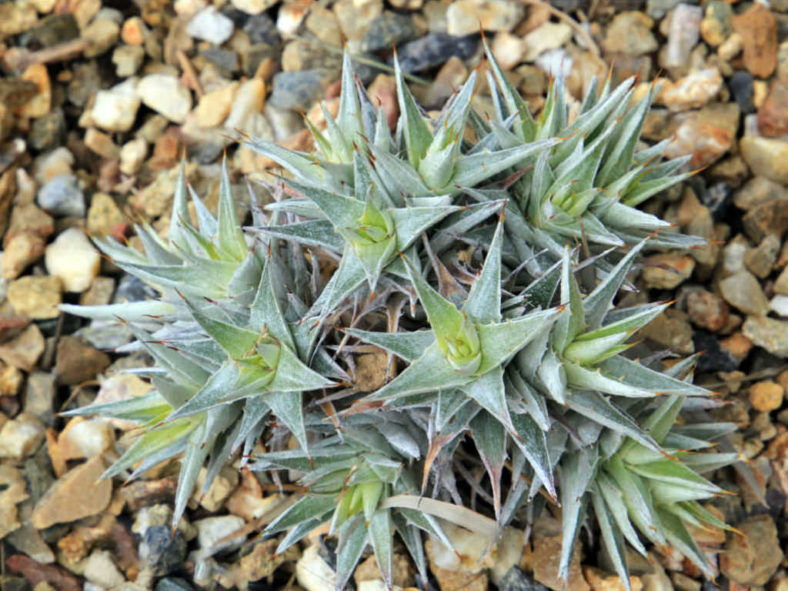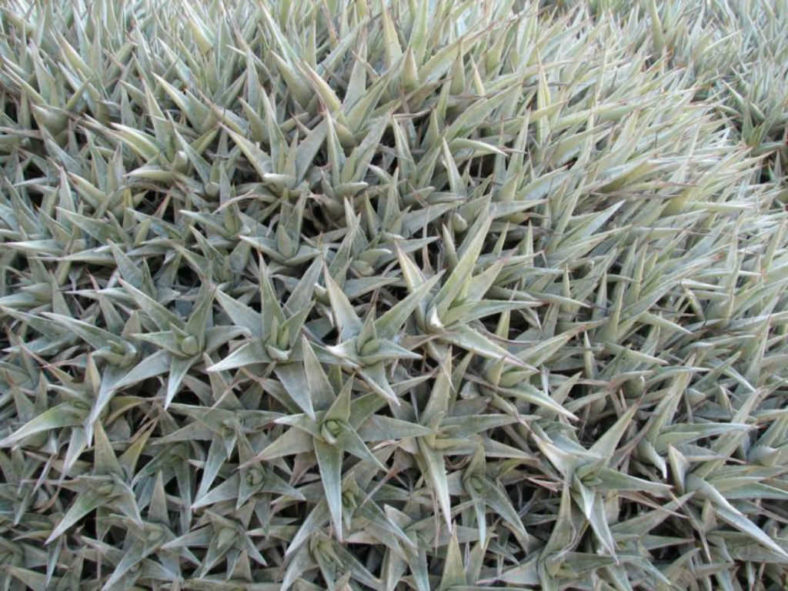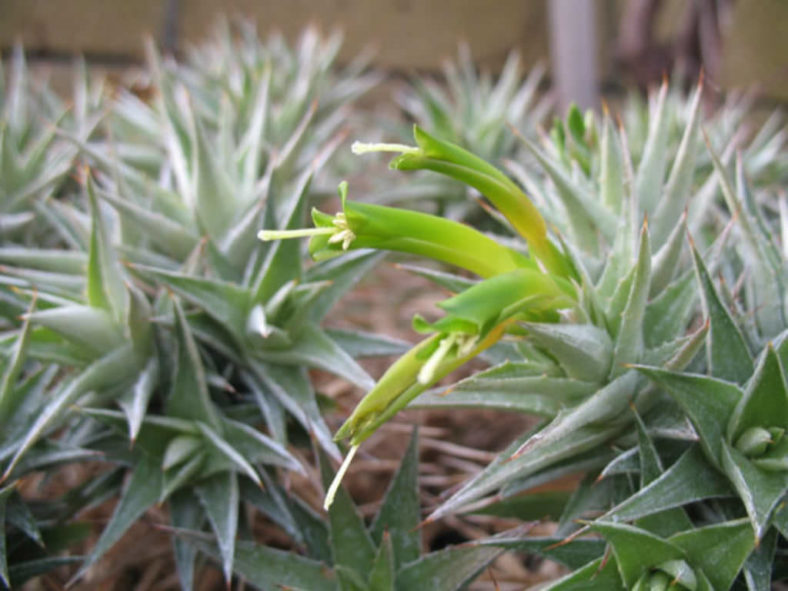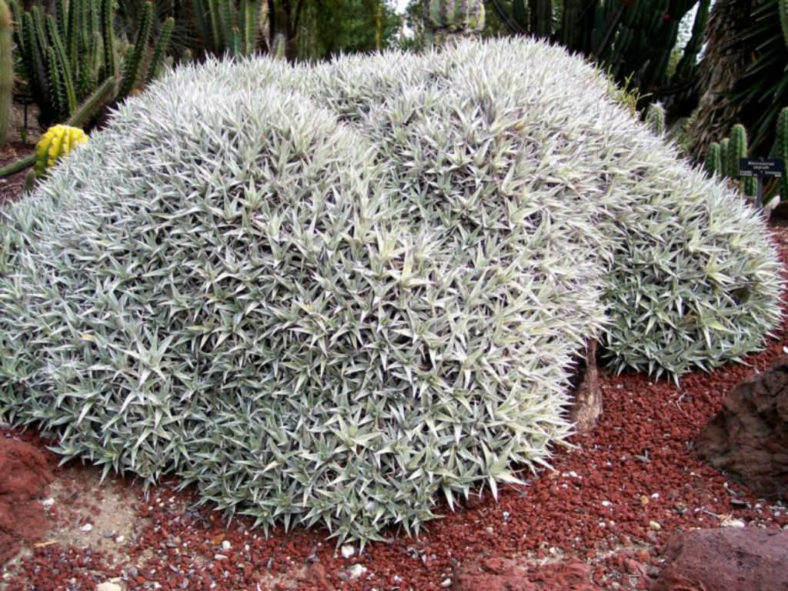Scientific Name
Deuterocohnia lorentziana (Mez) M.A.Spencer & L.B.Sm.
Synonym(s)
Pitcairnia lorentziana, Abromeitiella lorentziana, Abromeitiella abstrusa, Hepetis lorentziana
Scientific Classification
Family: Bromeliaceae
Subfamily: Pitcairnioideae
Genus: Deuterocohnia
Origin
Deuterocohnia lorentziana is native to Bolivia.
Description
Deuterocohnia lorentziana is an attractive terrestrial Bromeliad that forms dense mounds of rosettes of stiff triangular leaves with smooth margins but a sharp terminal spine. It can grow up to 2 feet (60 cm) tall, while the individual rosettes can reach up to 1 inch (2.5 cm) in diameter. The leaves look silvery-white because they are covered with white reflective hairs.
The yellow-green flowers appear from late winter to early spring and can reach up to 1 inch (2.5 cm) in length.

Hardiness
USDA hardiness zones 9a to 11b: from 20 °F (−6.7 °C) to 50 °F (+10 °C).
How to Grow and Care
Deuterocohnia is a perennial Bromeliad that forms an interesting mounding ground cover. It grows by slowly dividing into a tight, cushion-shaped colony. In its native environments, it is watered perhaps only twice a year, obtaining most of its moisture from the air. It can also get extra moisture from ocean fogs that roll in.
This is an excellent plant for a small-scale groundcover in rock or succulent gardens. Deuterocohnia makes an interesting specimen plant in containers.
Grow your Deuterocohnia in well-drained humus-rich soil with added pebbles, perlite, hardwood bark, or other material to facilitate drainage. Keep it in bright light or partial sun and water moderately in spring and summer, letting it dry between waterings. Limit water during winter. It is probably one of the cold-hardiest Bromeliads, but detesting winter wetness on its foliage makes it difficult to keep outside.
Learn more at How to Grow and Care for Deuterocohnia.
Links
- Back to genus Deuterocohnia
- Succupedia: Browse succulents by Scientific Name, Common Name, Genus, Family, USDA Hardiness Zone, Origin, or cacti by Genus
Photo Gallery
Click on a photo to see a larger version.


